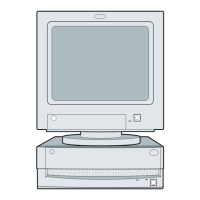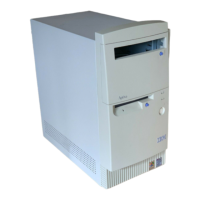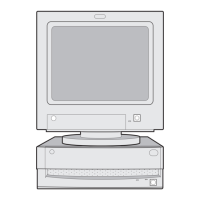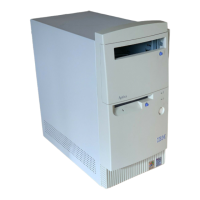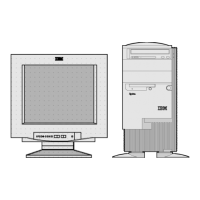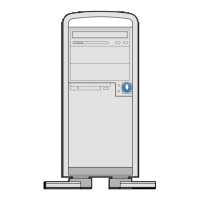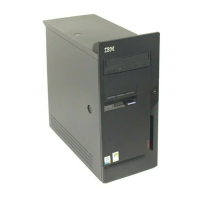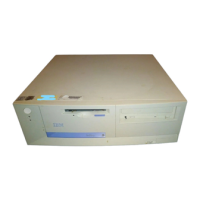44
Table 2-3 Error Symptoms List
NOTE:
To diagnose a problem, first find the error symptom in the left column. If directed
to a check procedure, replace the FRU indicated in the check procedure. If no
check procedure is indicated, the first Action/FRU listed in right column is the
most likely cause.
Error Symptoms Action/FRU
Processor / Processor Fan
NOTE:
Normally, the processor fan should be operative, and the processor clock
setting should be exactly set to match its speed requirement before
diagnosing any processor problems.
Processor fan does not run but
power supply fan runs.
Ensure that the system is not in power saving mode
and the “Stop CPU clock in sleep state” is not set to
Yes. See “Power Management” on page 5.
With the system power on, measure the voltage of
processor fan connector FN2 for 2170/2171/2172.
Its reading should be +12Vdc. See “Machine Type
2170 System Board Jumpers and Connectors” on
page 147 and See “Machine Type 2171 and 2172
System Board Jumpers and Connectors” on page
150.
Processor fan.
System board.
Processor test failed. Processor.
System board.
System Board and Memory
NOTE:
Ensure that the memory modules are installed properly and the contact leads
are clean before diagnosing any system problems.
Memory test failed. See “Memory” on page 61.
System board
Incorrect memory size shown
or repeated during POST.
Insert the memory modules in the DIMM sockets
properly, then reboot the system.
Memory module. See the “Step 005” of “Memory” on
page 61 to replace memory module.
System board.
System works but fails to enter
power saving mode when the
Power Management Mode is
set to [Enabled], and power
saving timer set in BIOS has
elapsed.
Enter BIOS Setup and load default settings.
In Windows 98, check settings in Power
Management Property of Control Panel.
Reload software from Recovery CD.
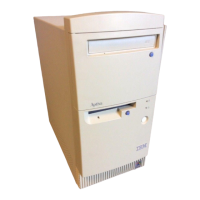
